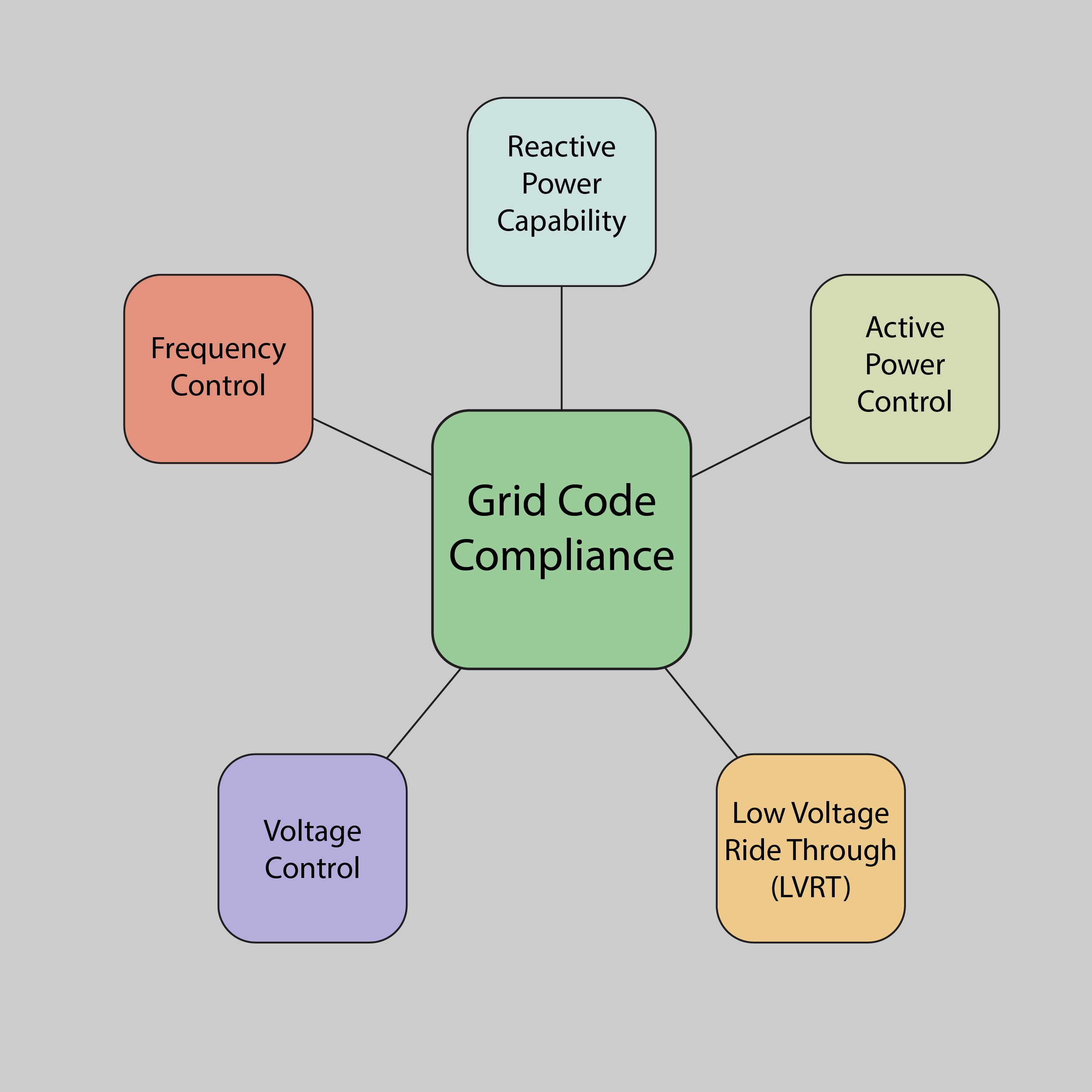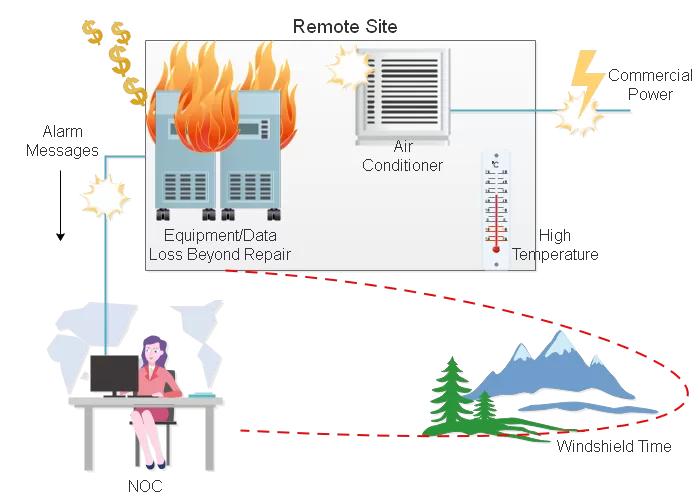Check out our White Paper Series!
A complete library of helpful advice and survival guides for every aspect of system monitoring and control.
1-800-693-0351
Have a specific question? Ask our team of expert engineers and get a specific answer!
Sign up for the next DPS Factory Training!

Whether you're new to our equipment or you've used it for years, DPS factory training is the best way to get more from your monitoring.
Reserve Your Seat TodayKeeping the power grid stable, secure, and online requires adherence to strict rules and standards. Grid regulation compliance involves meeting these requirements. This ensures that all electrical grids - from generation to distribution - work as they should.
Failing to follow these regulations could lead to disruptions in electricity service, safety risks, and failures. That's why all stakeholders, from utility companies to large industrial energy consumers, must maintain compliance to protect the reliability of our power infrastructure.
Let's dive deeper into what grid regulation compliance means, who it impacts, and how the right equipment plays a key role in helping you meet these critical standards.

Grid regulation compliance refers to the set of standards and guidelines established by regulatory bodies to verify that the operations of the electrical grid are safe & reliable. They cover areas like power quality, grid stability, safety protocols, and the integration of renewable energy. Compliance maintains the grid's ability to handle fluctuating energy demands, integrate renewable sources without disruption, and maintain a consistent, high-quality power supply to consumers.
Compliance is important. Failure to adhere to these standards can result in power disruptions, safety risks, and costly fines. A non-compliant power producer, grid operator, or large-scale energy consumer can trigger a cascade of problems. This potentially leads to large-scale outages that impact millions.

Failing to meet grid regulation compliance can have serious consequences, not just for the grid but also for your business. Non-compliance can result in regulatory penalties, fines, and restrictions. You might be prevented from connecting to the grid or selling energy.
More importantly, it can jeopardize grid stability. An unstable grid can result in power outages that can lead to costly downtime, lost productivity, and potential safety hazards.
For businesses relying on continuous power - whether for manufacturing, data centers, or critical infrastructure - grid regulation compliance isn't just about avoiding fines. You must protect your operations and sustain consistent, reliable power. Non-compliance increases operational risks and could tarnish your business's reputation.
Maintaining compliance with grid regulations requires strong monitoring systems that can track the health of your electrical infrastructure in real time. Advanced monitoring tools are needed to confirm that you meet regulatory standards and provide a clear view of what's happening across your power network. These systems allow you to identify potential issues, gather data, and respond quickly to avoid non-compliance.
Modern monitoring solutions are designed to handle diverse alarm types and offer comprehensive visibility into the grid's performance. With these tools, you can monitor power quality, environmental conditions, equipment failures, and more.
Whether your equipment uses the newest technology or legacy systems, you'll want a monitoring platform that can integrate different devices and protocols into a single, centralized interface. This integration will allow you to manage and assess the entire grid more efficiently.
These monitoring systems should also automate critical responses by setting predefined thresholds for various parameters. If a piece of equipment experiences a failure or goes offline, the system can automatically trigger alerts and initiate a response.
This urgency reduces the risk of downtime and compliance violations. This automation is particularly valuable in preventing human error. This ensures that regulatory requirements are met consistently.
By deploying capable monitoring systems, companies involved in electricity generation, transmission, and large-scale energy consumption can stay on top of compliance challenges while improving the overall reliability of their operations.

Staying compliant requires constant monitoring, real-time data collection, and automation. This is a DPS Telecom area of expertise, particularly for your telecom support systems.
DPS provides several different monitoring tools - like the NetGuardian RTUs and T/Mon alarm management systems. They're designed to help you track the health of your electrical infrastructure and respond to many of the issues that might impact compliance.
For example, the NetGuardian 832A offers extensive monitoring capabilities with 32 discrete alarms and 8 analog inputs. It can handle connected equipment alarms related to power quality, equipment failures, and environmental conditions. This ability makes it a valuable tool for utility companies, IPPs, and grid operators. This device is also highly adaptable, with the ability to connect legacy and modern equipment, upholding that your entire infrastructure can be monitored from a single platform.
The T/Mon Alarm Management System goes a step further by consolidating multiple alarm types across different protocols into one interface. Whether you're monitoring SNMP, legacy equipment, or environmental sensors, T/Mon provides a centralized view of your entire grid. This level of integration helps you maintain compliance by allowing quick identification and resolution of any new issues.
One of the biggest challenges in grid compliance is monitoring remote sites in real time. Whether you're managing a small substation or a large industrial facility, having constant visibility into what's happening at these sites is 100% necessary for staying compliant. The NetGuardian G6 series RTUs provide the tools you need to monitor even the most remote locations.
For example, the NetGuardian 864A is perfect for larger facilities, offering the ability to monitor up to 64 discrete alarms and 8 analog inputs. It also functions as a terminal server for legacy devices, making sure that both new and old infrastructure is covered. If you're working with smaller sites, the NetGuardian 216 G6 provides a compact solution with 16 discrete alarms, 6 analog inputs, and a ping alarm feature to keep you informed if network devices go offline.
These monitoring systems can send SNMP traps, email notifications, and even execute automated responses when predefined thresholds are exceeded. That keeps your team informed and responsive - no matter where they are.
Cybersecurity has become a key component of compliance. Power grids are increasingly connected to the internet, which makes them vulnerable to cyberattacks.
That's why the most effective monitoring solutions incorporate secure web interfaces for encrypted data transmission. These features protect your grid's sensitive data from unauthorized access, while allowing you to monitor and manage your sites from anywhere.
The T/Mon LNX master station integrates a secure web interface using TLS v1.2 encryption, which provides a safe way to access and monitor your critical infrastructure remotely. This secure interface protects any data transmitted between the system and your team from external threats. This protection safeguards sensitive grid information.
The T/Mon also provides SNMPv3 support which further strengthens the device's protection by encrypting all SNMP communications. This adds an extra layer of security against cyberattacks. Whether you're accessing the system from a control room or a remote location, you can trust that your data is secure and inaccessible to unauthorized parties.
This combination of security and accessibility helps you stay compliant with regulatory requirements while protecting your infrastructure from cyber threats.
Grid regulation compliance doesn't have to be a burden when you have the right tools in place. DPS Telecom's monitoring systems, like the NetGuardian RTUs and T/Mon alarm manager, provide everything you need to monitor your infrastructure, respond to potential compliance issues, and optimize your operations. Whether you're managing a utility company, operating as an independent power producer, or ensuring the compliance of an industrial facility, DPS has perfect-fit solutions that fit your specific needs.
To get started on achieving grid compliance and improving your infrastructure's reliability, contact DPS Telecom today. Call 1-800-622-3314 or email sales@dpstele.com to learn more about the best solutions for your operation.

Andrew Erickson
Andrew Erickson is an Application Engineer at DPS Telecom, a manufacturer of semi-custom remote alarm monitoring systems based in Fresno, California. Andrew brings more than 18 years of experience building site monitoring solutions, developing intuitive user interfaces and documentation, and opt...